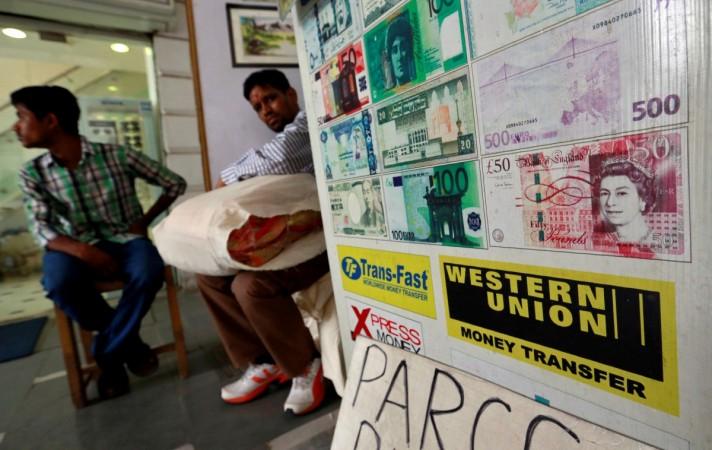
The Indian rupee apparently stares at a bleak future. If a recent Reuters poll estimated that the currency could fall to 69 to the US dollar during calendar year 2017, a recent report by UBS has made an even more pessimistic projection.
The rupee could plunge to as low as 73 to the US dollar by the end of the financial year ending March 2018. "We forecast a USDINR rate of 73 by end-FY18," UBS said in its latest research report.
On Wednesday, the Indian rupee opened at 68.25 to the US dollar after closing the previous session at 68.18 levels.
Also read: Chinese yuan depreciated faster than Indian rupee in CY2016
It should be noted that the Indian rupee dropped at a lower clip compared to its Chinese counterpart in calendar year (CY) 2016. While the Chinese yuan depreciated 6.6 percent, the Indian rupee fell 2.70 percent against the US dollar, despite demonetisation and FCNR deposit redemption.
The Swiss global financial services firm has projected a GDP growth between 6-8 percent for the next financial year (FY2017-18) citing short-term disruption caused by demonetisation, though in the long run, the economy is likely to bounce back.
Demonetisation, GST major drag
The delay in implementing GST and the slowdown induced by demonetisation is likely to impact the economy till after the March quarter of FY17.
"We expect the upcoming implementation of the Goods and Services Tax (GST), and recently demonetisation, to remain a drag in 2017—although our base case is for the negative impact of the latter to last only until Q4 FY17," UBS report said.
"GST roll-out seems likely in July 2017—we think it is a game-changer reform with an integrated IT backbone potentially the biggest benefit," the report added.
India pipped China — after many years — to emerge as the fastest-growing economy of the world in CY2015, growing at 7.5 percent in comparison to China's 6.9 percent. The central government's demonetisation drive has impacted both industrial and services output, with a survey last week showing that factory activity and services took a hit last month, leading to worries that it would dent growth, Reuters had reported.
Nifty target for CY2017, post-demonetisation recovery
UBS said that the NSE Nifty would reach 8,800 by the end of the current calendar year, amid likely recovery in the second half of the next fiscal (H2, FY2018). "
We have an end-2017 Nifty target of 8,800. Our upside/downside scenarios of 9,700/6,400 suggest the risk-reward is not yet attractive near term. The wider-than-usual range reflects heightened uncertainty around potential outcomes. An earnings growth pick-up in H2 FY18 off a low base, rate cuts and the hope of a growth recovery in 2018 may help market performance, likely more so in H217," UBS said in its report.
The 50-scrip Nifty gained 92 points, or 1.11 percent, on Wednesday to close at 8,380.













